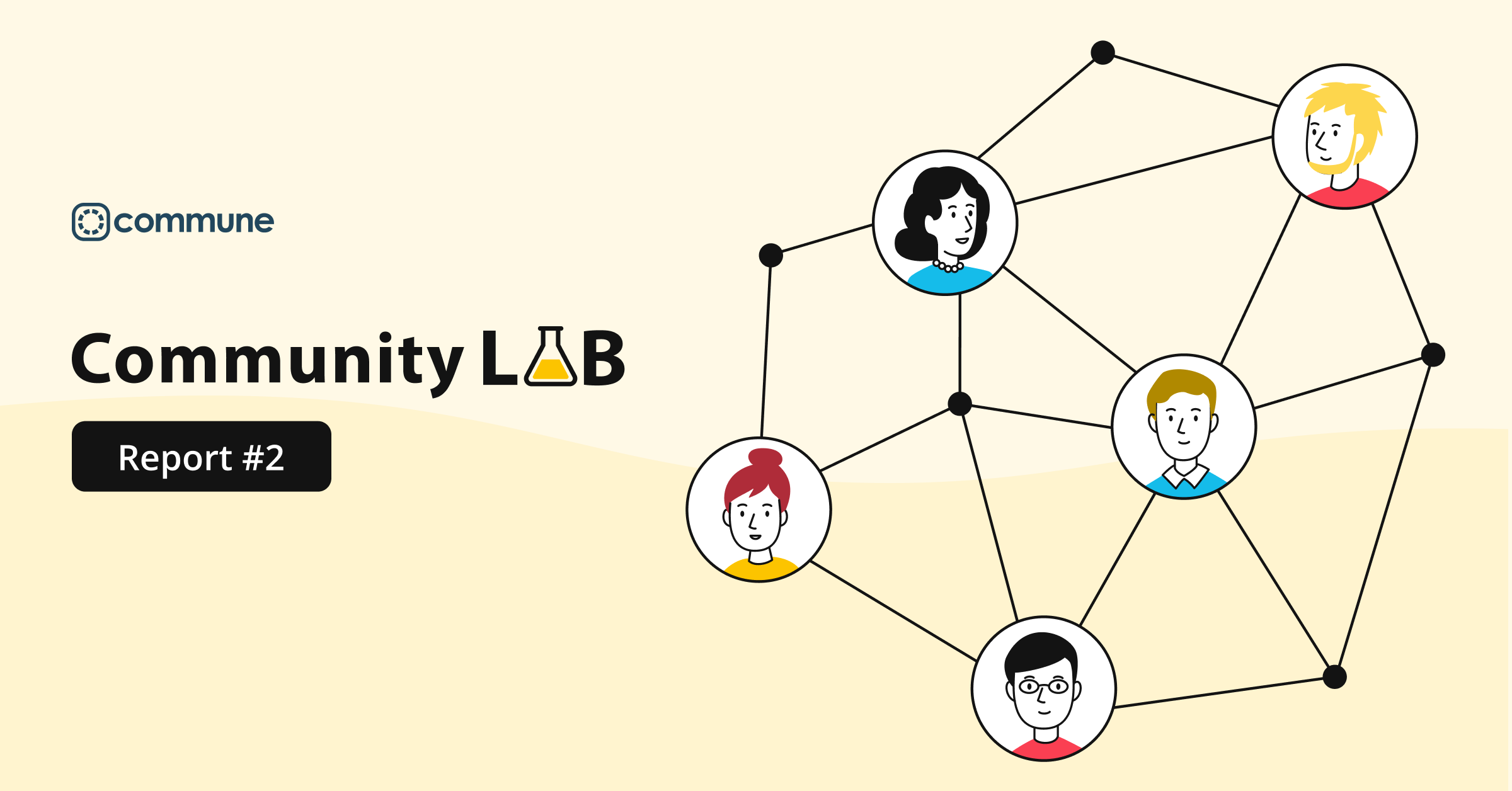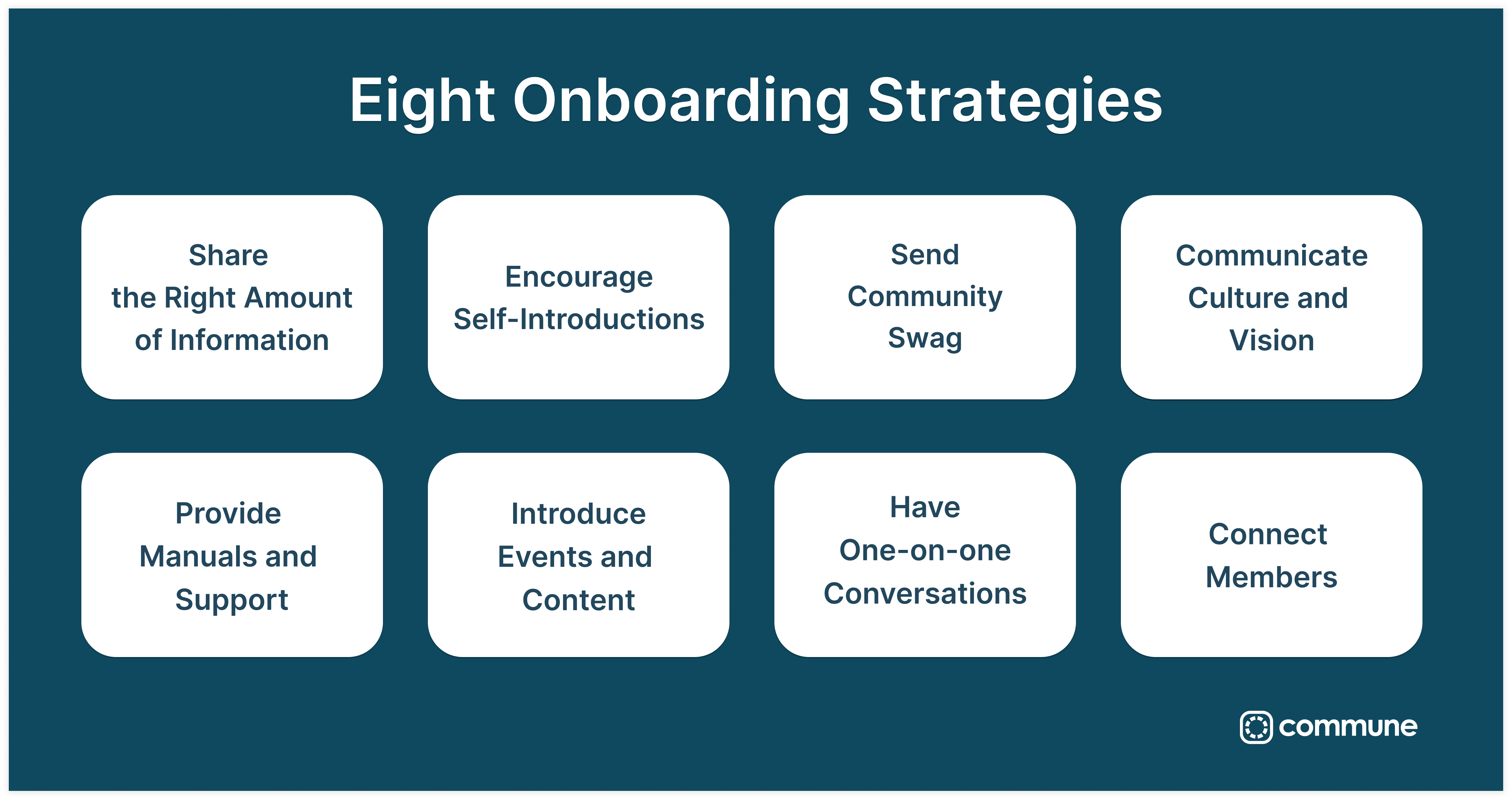
According to the Oxford Dictionary, “onboarding” is defined as “the action or process of integrating a new employee into an organization or familiarizing a new customer or client with one’s products or services.” Originally associated with integrating employees into a business, the concept of onboarding has expanded to encompass the process of welcoming new members into a community, which is a crucial step for energizing the community and achieving successful outcomes. Without effective onboarding, new members may leave before fully experiencing the community’s value, diminishing engagement among existing members and increasing their likelihood of departure. Therefore, meticulous onboarding is essential for the success of community management.
But what specific onboarding initiatives lead to success in communities? Drawing from real-world examples across various communities supported by Commune Inc., this article delves into detailed onboarding mechanisms.
Onboarding activities are generally divided into “synchronous” and “asynchronous” types. In synchronous onboarding, managers and new members schedule specific times for interaction, fostering a real-time exchange of information and feedback. Asynchronous onboarding, on the other hand, does not require simultaneous engagement, allowing participants to interact with the content and responses at their convenience.
Furthermore, these initiatives can be personalized as “individualized,” where interactions with new members are tailored to their specific needs and questions, or “universal,” applying the same standard processes and information to all members.
Although synchronous and individualized methods often incur higher costs, either financially or temporally, they are particularly impactful in deeply conveying the community’s core values and fostering a strong sense of loyalty among new members. Asynchronous and universal strategies, by contrast, are more commonly adopted due to their scalability and lower resource requirements. Keeping these differences in mind helps streamline the development of an effective onboarding strategy.
Here are eight strategic onboarding initiatives:

Overloading new members with an abundance of information immediately can lead to overwhelm and disengage them. It is more effective to introduce information in a gradual manner, ensuring they can comfortably assimilate it.
Focusing initially on conveying critical information, such as the community’s general rules and key documents for navigating the community setup, is essential. It might be wise to limit access to broader information initially, revealing only the essentials to prevent information overload. As new members familiarize themselves with the community’s workings, progressively providing more detailed information over a span of one to four weeks can be beneficial.
On the flip side, a lack of information might prompt new members to disengage or even leave the community. Enhancing community touchpoints by prompting members to download a dedicated application or to sign up for a newsletter proves to be a strategic move. This not only keeps members informed but also engaged with the community’s ongoing activities and updates.
By carefully managing the flow of information — starting with crucial basics and gradually increasing depth — members can ease into the community without feeling overwhelmed. Encouraging the utilization of community-specific apps or newsletters serves as an effective strategy to foster continuous engagement and keep the communication channels open.
Encouraging new members to introduce themselves when they join the community, be it through in-person meetings or online platforms, is crucial. This practice enables community managers to gain insights into the new members’ aspirations and interests.
Such introductions are instrumental in shaping various community initiatives, including the development of management policies, the creation of relevant content, and the organization of community-driven events. For the established members, these introductions serve as a reminder of the growing community, fostering an increased sense of engagement and belonging. Crucially, for the newcomers, the awareness that their presence is acknowledged by others is vital. These initial introductions contribute to creating a welcoming atmosphere, making the community feel like a secure and inviting space, thus motivating new members to engage more deeply and actively participate.
Distributing swag related to the community can significantly boost members’ feelings of connection and inclusion. Items such as novelty gifts with the company’s logo or informative booklets are popular choices. Given that this approach requires financial resources, it’s crucial to evaluate the tangible effects of such swag and consider alternative distribution methods, such as conducting lotteries.
Beyond fostering a stronger sense of belonging, community swag has the added advantage of encouraging the creation of user-generated content (UGC). Members often share photos and videos featuring the swag on social media platforms, effectively amplifying the community’s vibrancy and spirit to a broader audience.
People join communities for a myriad of reasons, ranging from personal invitations to curiosity sparked by acquaintances, leading to varied levels of initial understanding about the community. The lack of clear expectations regarding how they should interact or what reactions to anticipate from community managers and fellow members can deter new members, stemming from a lack of psychological safety.
To counteract this, proactively communicating the community’s defined culture and vision is essential. Leveraging automated tools within the community’s framework, such as introductory modals, facilitates this process. Continuous reinforcement of these core values is necessary, as the nuances of culture and vision are seldom fully absorbed with a single introduction. Regular and iterative communication is vital for embedding these principles deeply within the community fabric, as there are no shortcuts to cultivating a rich, shared culture.
Conversely, it’s important to convey the community’s rules in a balanced manner. Overemphasis on regulations can restrict the natural engagement of new members. A clear yet concise presentation of guidelines assures new members of their welcome, provided they adhere to the community’s standards, thus setting a foundation for positive and assured participation.
Approaching existing members or managers with questions can be intimidating for new members. Providing accessible manuals and official support channels can alleviate these concerns, offering a structured form of support and facilitating engagement. While the value of human interaction cannot be overstated, equipping the community with a comprehensive, searchable knowledge base is equally important. This allows for self-guided exploration, where members can independently address their queries and deepen their understanding of the community at their own pace.
However, the essence of any community lies in its capacity for human connection. Cultivating an environment that encourages open and informal communication with community managers not only strengthens members’ sense of belonging but also plays a critical role in retaining them. By fostering such connections, the community can preemptively address concerns or dissatisfactions, significantly reducing the likelihood of members deciding to leave.
Navigating a new community can be daunting for newcomers, who may find themselves uncertain about how to engage or where to begin. Offering tailored suggestions for event participation or content engagement, whether through manual curation or algorithmic recommendations, can serve as an effective introduction. These personalized suggestions help align with the new members’ interests and goals, providing a roadmap for developing content and events that resonate deeply with the community.
Additionally, recognizing that some individuals might feel overwhelmed by larger social settings, creating opportunities for participation in smaller, more intimate discussions can significantly ease the transition. By organizing gatherings limited to fewer than eight people, newcomers can form closer connections and feel more woven into the fabric of the community. This approach not only aids in their acclimation but also paves the way for more confident participation in broader community activities.

One-on-one conversations provide a relaxed setting for members and managers to connect meaningfully. A typical session lasting between 30 to 60 minutes often suffices to establish a solid rapport.
Such interactions go beyond the initial self-introductions made on the community platform, offering a richer understanding of new members’ personalities, aspirations, and potential concerns. The trust built during these conversations encourages ongoing engagement within the community, as members feel seen and supported on a personal level. It’s an opportune time to clarify doubts and address any questions, ensuring members have the support they need to thrive.
Furthermore, these discussions allow community managers to gain insight into the unique interests and challenges of new members. By identifying how these align with the community’s offerings, managers can guide members from simply participating to actively contributing, effectively co-creating the community experience together.
Bridging the gap between new and established members plays a crucial role in enhancing community engagement. Implementing a system where newcomers are paired with seasoned members, serving as “seniors,” “buddies,” or “mentors,” is a strategy many communities adopt. This method proves particularly beneficial for new members who arrive with high levels of motivation, offering them guidance and a faster integration into the community.
However, for some, this mentorship arrangement might seem daunting, potentially deterring their active participation. In these instances, facilitating connections among new members themselves may be more effective, promoting a sense of camaraderie and mutual support.
Whether through manual efforts or automated features provided by the community platform, creating opportunities for new members to connect plays a vital role. Innovative solutions, such as matching systems that allow newcomers to meet peers with similar interests, can enhance this process. As new members become more familiar with each other and the broader community, this initiates a positive feedback loop of engagement and participation, making the community more welcoming and accessible to all.
Implementing these onboarding strategies effectively welcomes new members, revitalizes existing members, and guides the community towards collective success. Consistent application of these practices lays the foundation for robust community management.
For those seeking to enhance their community onboarding processes, Commune’s strategic consulting service has successfully supported over 100 communities, from startups to established enterprises, in launching and managing their community initiatives. To learn more about how we can collaborate to enrich your community onboarding experience, book a demo today.